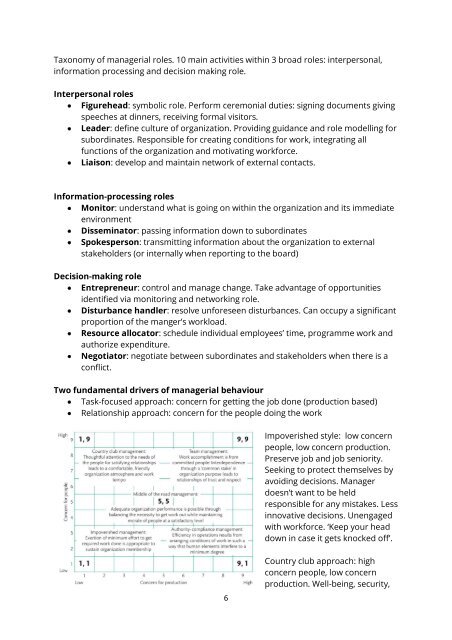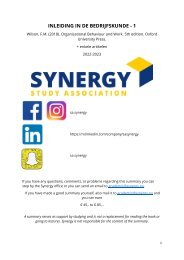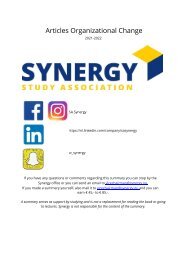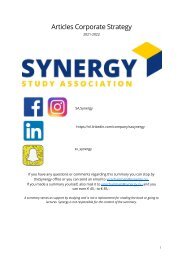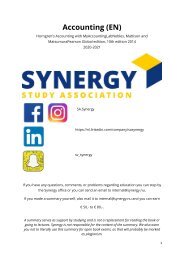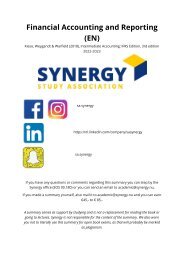Leadership in Organizations
You also want an ePaper? Increase the reach of your titles
YUMPU automatically turns print PDFs into web optimized ePapers that Google loves.
Taxonomy of managerial roles. 10 ma<strong>in</strong> activities with<strong>in</strong> 3 broad roles: <strong>in</strong>terpersonal,<br />
<strong>in</strong>formation process<strong>in</strong>g and decision mak<strong>in</strong>g role.<br />
Interpersonal roles<br />
• Figurehead: symbolic role. Perform ceremonial duties: sign<strong>in</strong>g documents giv<strong>in</strong>g<br />
speeches at d<strong>in</strong>ners, receiv<strong>in</strong>g formal visitors.<br />
• Leader: def<strong>in</strong>e culture of organization. Provid<strong>in</strong>g guidance and role modell<strong>in</strong>g for<br />
subord<strong>in</strong>ates. Responsible for creat<strong>in</strong>g conditions for work, <strong>in</strong>tegrat<strong>in</strong>g all<br />
functions of the organization and motivat<strong>in</strong>g workforce.<br />
• Liaison: develop and ma<strong>in</strong>ta<strong>in</strong> network of external contacts.<br />
Information-process<strong>in</strong>g roles<br />
• Monitor: understand what is go<strong>in</strong>g on with<strong>in</strong> the organization and its immediate<br />
environment<br />
• Dissem<strong>in</strong>ator: pass<strong>in</strong>g <strong>in</strong>formation down to subord<strong>in</strong>ates<br />
• Spokesperson: transmitt<strong>in</strong>g <strong>in</strong>formation about the organization to external<br />
stakeholders (or <strong>in</strong>ternally when report<strong>in</strong>g to the board)<br />
Decision-mak<strong>in</strong>g role<br />
• Entrepreneur: control and manage change. Take advantage of opportunities<br />
identified via monitor<strong>in</strong>g and network<strong>in</strong>g role.<br />
• Disturbance handler: resolve unforeseen disturbances. Can occupy a significant<br />
proportion of the manger’s workload.<br />
• Resource allocator: schedule <strong>in</strong>dividual employees’ time, programme work and<br />
authorize expenditure.<br />
• Negotiator: negotiate between subord<strong>in</strong>ates and stakeholders when there is a<br />
conflict.<br />
Two fundamental drivers of managerial behaviour<br />
• Task-focused approach: concern for gett<strong>in</strong>g the job done (production based)<br />
• Relationship approach: concern for the people do<strong>in</strong>g the work<br />
Impoverished style: low concern<br />
people, low concern production.<br />
Preserve job and job seniority.<br />
Seek<strong>in</strong>g to protect themselves by<br />
avoid<strong>in</strong>g decisions. Manager<br />
doesn’t want to be held<br />
responsible for any mistakes. Less<br />
<strong>in</strong>novative decisions. Unengaged<br />
with workforce. ‘Keep your head<br />
down <strong>in</strong> case it gets knocked off’.<br />
6<br />
Country club approach: high<br />
concern people, low concern<br />
production. Well-be<strong>in</strong>g, security,


